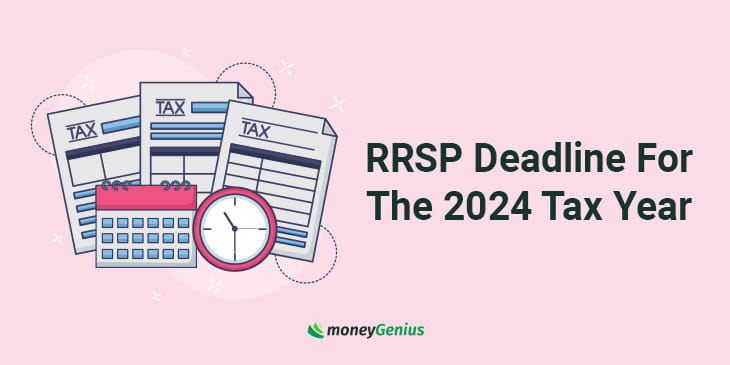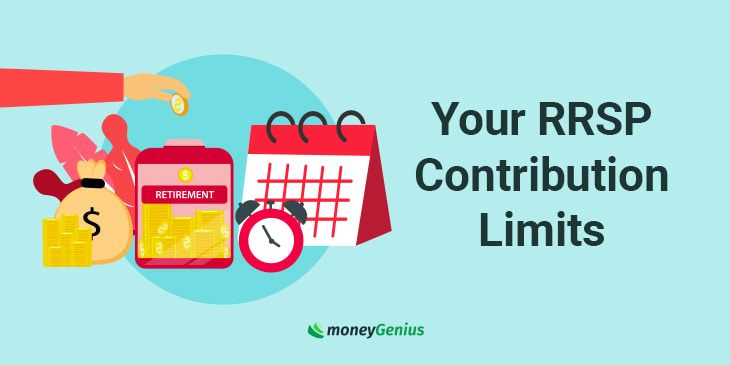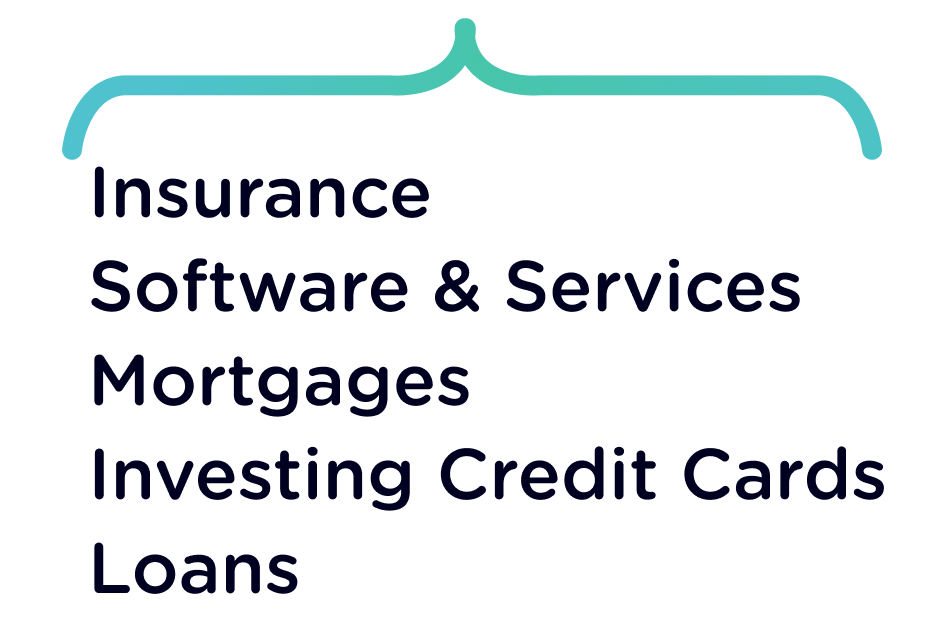A Registered Retirement Savings Plan (RRSP) is a tax-advantaged savings account in Canada designed to help individuals save for retirement. Contributions to an RRSP are tax-deductible, reducing your taxable income in the year you contribute, which can result in a lower tax bill.
Additionally, the funds grow tax-deferred, meaning you won't pay taxes on investment gains until you withdraw them in retirement, typically when you're in a lower tax bracket. RRSPs are a smart move because they offer immediate tax relief and long-term growth potential, helping Canadians build wealth for retirement while minimizing taxes.
Best RRSP in Canada 2025 winner: Desjardins RRSP
Our pick for the best RRSP in Canada for 2025 is the Desjardins RRSP. Desjardins’ RRSP options are a great place to put your retirement savings, and you can start with what you have because there’s no minimum contribution requirement. Plus, you can put away a little extra with their BONUSDOLLARs program.
How we ranked the best RRSPs
To evaluate RRSPs, we analyze over 20 data points to generate a trustworthy Genius Rating. We consider all aspects of an RRSP, including investment options, fees, perks, customer satisfaction, and promotions, to assess its overall value. Then, the RRSP’s features are rated based on how they stack up against other available options.
3 best RRSPs in Canada
Yes, the Desjardins RRSP is the top choice for an RRSP in Canada, but there are other highly-rated options to consider as well. Here's a look at the 3 highest-rated options to consider.
A Desjardins RRSP can be a smart choice for Desjardins clients trying to plan for their future. As with all Registered Retirement Savings Plans (RRSPs), this account offers a tax-free home for any retirement savings, with room and opportunity to add several types of investments – as long as it stays within the government-set annual contribution limits.
- Tax sheltered and tax deductible
- Easy and quick online setup process
- Ability to convert BONUSDOLLARS into RRSP investments
- Withdrawal creates a tax penalty
- Limited nation-wide presence for Dejardins
- Age of majority
- Canadian resident
- Under 71 years old
- Be a current Desjarins client
- Contribute to your RRSP with BONUSDOLLARS
- Market-linked
- Non-Cashable
- Cashable
- US Dollar
If you’re looking for ways to save for your retirement, Scotiabank RRSPs come in a variety of shapes and sizes – with options for both the DIY and laidback investors alike (and everyone in between). You can open up a self-directed RRSP through Scotia iTrade, an automated portfolio, or keep it simple with a registered savings account.
- Options available for the DIY and hands-off investors
- Both redeemable and non-redeemable GICs available
- RRSP GICs have a low $500 minimum investment
- Not a lot of information on the website
- No standout features to set it apart from the crowd
- Age of majority
- Canadian citizen
- Under 71 years old
- Cashable
- Non-cashable
- Market linked
- Personal redeemable
BMO RRSPs give you a variety of options for investing in your retirement, including portfolios, 3 types of GICs, mutual funds, and more. You can even open an RRSP account through BMO InvestorLine, if you prefer a more hands-on approach to investing.
- Self-directed options for the DIY investor
- Get guaranteed returns with 15 GICs
- Invest with a mutual fund or portfolio for a hands-off approach
- Feel secure with a big bank
- No special features to stand out from the crowd
- Beware the various fees associated with different accounts
- Age of majority
- Canadian citizen
- Under 71 years old
- Cashable
- Non-cashable
- Market-linked
What is an RRSP?
A Registered Retirement Savings Plan (RRSP) is a tax-advantaged investment account in Canada designed to help individuals save for retirement. Contributions are tax-deductible, and investments within the RRSP grow tax-deferred until withdrawal, typically at retirement when the individual's income may be lower.
When it's time to withdraw from your RRSP (ideally during retirement), you'll have to pay income tax matching your tax bracket at the time of withdrawal.
You can keep your RRSP open until you turn 71, at which time you'll be required to close it. Many individuals choose to transfer their funds to an RRIF at that stage. This conversion requires you to start making withdrawals, but still allows your investments to continue growing within the account.
Investment options for RRSPs
As mentioned, there are a number of different investment options that can be held within an RRSP account. Here are a few examples:
Cash
Cash accounts can be opened with just about any standard bank, online bank, or online broker. And once you put cash into your RRSP, it’s protected from market fluctuations – making this a simple and appealing option.
GICs
GIC stands for "guaranteed investment certificate" and works similarly to a savings account – you deposit money and it earns interest. Each GIC has a term length that varies from a few months to 10 years.
Whether or not you can withdraw your funds before the term expires will depend on whether you purchase the cashable/redeemable or the non-cashable types.
ETFs
Exchange traded funds, or ETFS, provide exposure to a variety of stocks at a relatively low cost. And their fees are lower too – in fact, if you use an online broker, you often don’t have to pay commission fees at all.
This type of investment is particularly appealing to those who like to diversify while still saving on fees.
Stocks
Stocks represent ownership in a company, giving you a share of its profits and assets. The value of your stock can go up or down based on the company’s performance and market conditions.
Newbie investors often start with stocks due to their accessibility and potential for growth.
Mutual funds
With mutual funds, your money is pooled with funds from many other investors and used to buy a diversified portfolio of stocks, bonds, or other securities. The fund's value rises or falls based on the performance of the underlying investments.
Managed by professional fund managers, they offer a way for individuals to invest in a variety of assets without needing to pick them individually.
Where to open an RRSP
Many banks, including the Big 5 in Canada, offer a variety of investment products that can be held within an RRSP. If you like to keep all your financial products and services in one place, speaking with an advisor at your bank may be the easiest way to open an RRSP.
Otherwise, you can open an RRSP through one of these platforms:
The bottom line is, because RRSPs can hold an assortment of investment products, you can open them at almost any financial institution.
RRSP vs. TFSA
A tax free savings account, or TFSA, is a popular type of registered savings plan that's fairly similar to an RRSP.
- Both are tools to help save money
- Both are registered with the government
- Both have strict contribution limits
- Both hold various investment products
- Both have associated tax benefits
But unlike an RRSP, a TFSA isn't necessarily linked to your retirement. Your investments grow tax-free within the account and you aren't taxed on withdrawal – the money you use for contributions comes from has already been taxed.
RRSP contribution limits
As a registered account, your RRSP has limitations when it comes to how much you can contribute every year. You can find this information on your CRA My Account – referred to as the RRSP deduction limit.
The calculations for RRSP contributions are a bit complicated, taking into account things like your income, the annual RRSP limit, pension adjustments, and more.
Basically, if 18% of your income equals less than that year's RRSP limit, you'll be given the RRSP limit. But they also make adjustments based on pensions, plus unused room from previous years carries over.
The RRSP limit for 2024 is $31,560. If you happen to go over the RRSP contribution limit, you'll be charged a 1% penalty for any amounts over $2,000. This is charged every month until you're no longer over the limit.
Here's a look at RRSP contribution limits since 2013:
| Year | RRSP limit |
|---|---|
| 2025 | $32,490 |
| 2024 | $31,560 |
| 2023 | $30,780 |
| 2022 | $29,210 |
| 2021 | $27,830 |
| 2020 | $27,230 |
| 2019 | $26,500 |
| 2018 | $26,230 |
| 2017 | $26,010 |
| 2016 | $25,370 |
| 2015 | $24,930 |
| 2014 | $24,270 |
| 2013 | $23,820 |
As you can see, each year generally sees a small increase in the amount you can contribute to your RRSP, which you can see demonstrated visually in the chart below:

RRSP withdrawal
As long as you don't have a locked-in RRSP – often called a LIRA – you can withdraw funds from your RRSP account at any time.
Once you reach the age of 71, your RRSP is considered to have hit maturity and you'll be required to close the account.
RRSP withdrawal tax
Though you can make RRSP withdrawals at any time, there's one major thing to keep in mind.
The amount you take out will count as income for that year, meaning you'll need to pay income tax on it.
But there are two common situations when this doesn't apply:
- First Time Home Buyer Plan: When you use the money to help purchase your first home
- Lifelong Learning Plan: When you use the money to help fund your continued education
In these cases, no tax will be withheld, as this money doesn't count as income. That said, you'll have to pay back the amount you take out within a certain amount of time. This also means the money will lose any potential interest it would've made if you had kept it in the account.
RRSP calculator Canada
Enter your information below to get a snapshot of what your RRSP could look like down the road.
Savings Info
Editorial Disclaimer: The content here reflects the author's opinion alone, and is not endorsed or sponsored by a bank, credit card issuer, rewards program or other entity. For complete and updated product information please visit the product issuer's website.
FAQ
What is an RRSP?
An RRSP is a Registered Retirement Savings Plan – a savings plan that’s registered with the federal government. Because contributions are tax-deductible, they’re quite an appealing option for Canadians looking to save for their retirement.
How much can I contribute to an RRSP?
The RRSP contribution limit for 2024 is $31,560. The limit for 2025 has also been announced: your contributions will be capped at $32,490. Overcontributions will trigger a monthly penalty of 1% for any amounts greater than $2,000.
Can you tell me the best way to withdraw money from my RRSP?
Most RRSPs let you withdraw whenever you want, but withholding taxes do apply. The best times to withdraw from your RRSP before retirement are when you’re buying your first home or paying tuition for post-secondary/further education.
What's the RRSP deduction limit?
The RRSP deduction limit is another term for the amount you can contribute to your RRSP each year. Contribution or deduction limits change on an annual basis – the limit for 2024 is $31,560 and $32,490 for 2025.
What is the difference between an RRSP and TFSA?
Both are registered savings accounts that offer tax benefits, but you can claim RRSP contributions on your income tax – you can't with TFSA contributions. That said, you don't pay tax on TFSA withdrawals but you do with RRSP withdrawals.
Which are the best RRSP investment types?
You can invest with cash, GICs, ETFs, mutual funds, stocks, bonds, and more. To determine which is best for you, consider your risk tolerance, how much time is left before retirement, and the annual contribution limits.
See more investment products
Interested in even more investment products? Check out some more top reviews here:

































